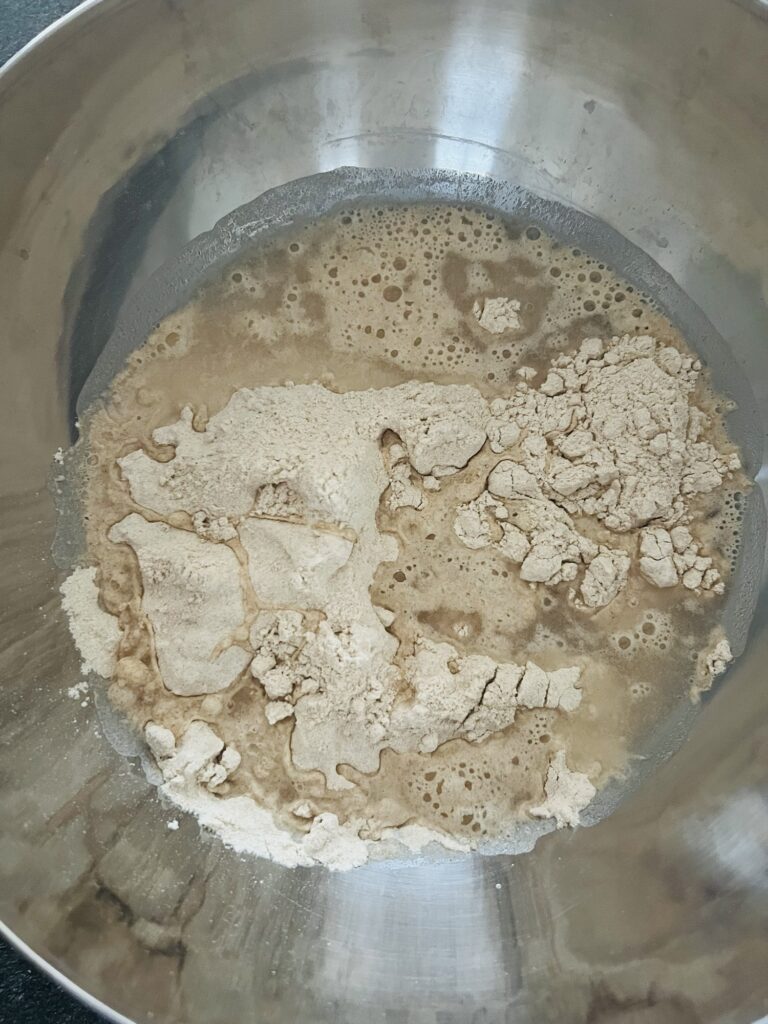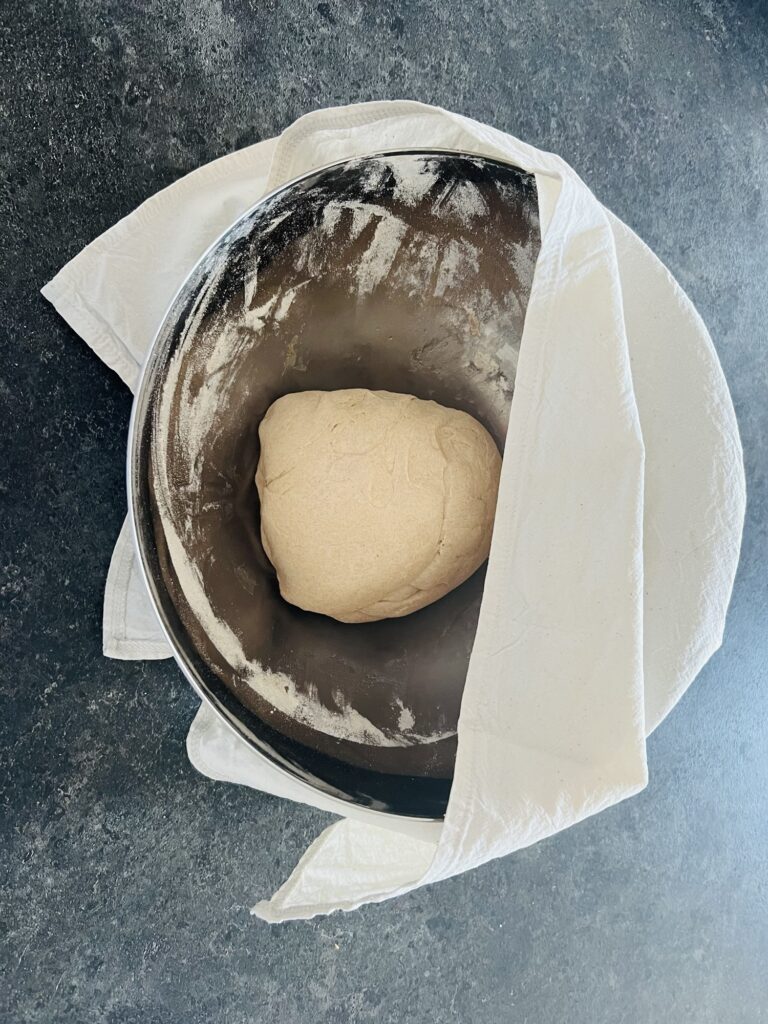Sourdough pizza is more than just a trend—it has a richer flavor, is easier to digest, and brings out the full potential of traditional pizza-making. Once you try a yeast-free pizza dough made solely with sourdough, you won’t want to go back.
In this article, I’ll guide you step by step on how to make your own sourdough pizza dough with just a few ingredients, a little patience, and a lot of flavor.
Why Use Sourdough for Pizza?
Sourdough is a natural alternative to commercial yeast that not only makes the dough lighter but also enhances its flavor. Thanks to the long fermentation process, the dough becomes more digestible and easier to absorb.
Some Benefits of Sourdough Pizza Dough:
- More aroma due to natural fermentation.
- Better digestion, as hard-to-digest components in the flour are broken down.
- Crispier crust and airy crumb, resulting in an authentic pizza.
- Longer freshness, since the dough stays fresh longer after baking.
Are you ready to try it? Let’s get started!
Recipe: Sourdough Pizza Dough
Ingredients for 2-3 Pizzas
- 500 g wheat flour (preferably Tipo 00 or wheat flour 550).
- 150 g active sourdough starter (wheat sourdough or Lievito Madre).
- 270 ml cold water.
- 10 g salt.
- 20 ml olive oil.
Note: Your sourdough should be active, so it’s best to feed it 4-6 hours before making the dough until it becomes bubbly.
Step-by-Step Guide to Making the Dough
1. Autolyse – The Secret to Better Pizza
Before we fully start, mix the flour with the water and let it rest for 30 minutes. This process, known as autolysis, improves the dough’s structure and makes it more elastic and smooth.
Why Autolyse?
- Strengthens the gluten network, improving elasticity.
- Enhances water absorption.
- Results in a finer and more stretchable dough.
After 30 minutes, move on to the next step.

2. Incorporating the Sourdough and Salt
Now it’s time for the star ingredient—sourdough! Add it along with the salt to the bowl and knead for about 10 minutes until you get a smooth dough. Then, add the olive oil and continue kneading until fully incorporated.
Tip: If kneading by hand, work in intervals: knead for 5 minutes, rest for 5 minutes, then knead for another 5 minutes. This makes the process easier!
3. Bulk Fermentation
Let the dough rest at room temperature for 4-6 hours. During this time, stretch and fold the dough every 30 minutes to further improve its structure.
Extra Option: If you want even more flavor, after this stage you can let the dough rest in the fridge for 12-24 hours. This is called cold fermentation, which enhances both the aroma and digestibility.
4. Final Proofing
After the bulk fermentation, divide the dough into 2 or 3 portions and shape them into balls. Let them rest at room temperature for another 2-4 hours to relax and become easier to stretch.
Tip: If you opted for cold fermentation, take the dough out of the fridge 2 hours before baking.
How to Bake the Perfect Sourdough Pizza
1. Preheat the Oven
The key to a crispy pizza is high temperature! Preheat your oven to 250-280°C (480-530°F)—ideally with a pizza stone or baking steel inside.
2. Shaping the Pizza Base
Now for the exciting part—shaping the pizza! Gently stretch the dough balls into thin rounds. Do not use a rolling pin—instead, stretch it carefully with your hands to keep the air bubbles intact.

3. Topping and Baking
Add your favorite toppings! A classic tomato sauce, mozzarella, and fresh basil combination is always a great choice. Then, place the pizza on the hot stone and bake for 5-7 minutes.
Your sourdough pizza is ready—crispy, airy, and full of flavor!
Frequently Asked Questions About Sourdough Pizza
1. Can I store the dough in the fridge for longer?
Yes! It can rest for up to 48 hours—the longer it ferments, the more complex the flavor.
2. My sourdough isn’t very active—what can I do?
If your sourdough starter isn’t bubbly enough, you can add 1 g of fresh yeast to the dough to help stabilize fermentation.
3. Can I make this recipe with rye sourdough?
Yes, but the flavor will be much stronger, and the dough less elastic. Wheat sourdough or Lievito Madre is best for optimal results.
Conclusion: Making Sourdough Pizza Is Worth It!
Preparing sourdough pizza dough takes a little more time than using commercial yeast, but the effort is absolutely worth it. Thanks to natural fermentation, the dough becomes more flavorful, crispier, and easier to digest.
Whether you stick to a classic recipe or experiment with creative variations, this dough will be the perfect foundation for your favorite homemade pizza.
Are you ready to try it? Leave a comment and share how your sourdough pizza turned out!
